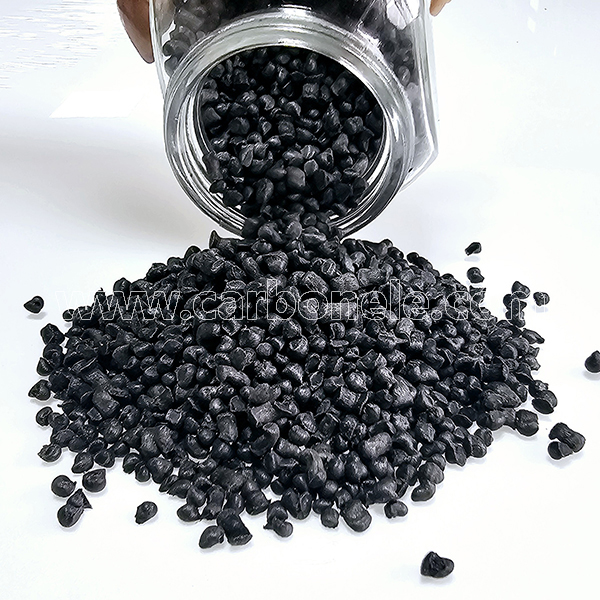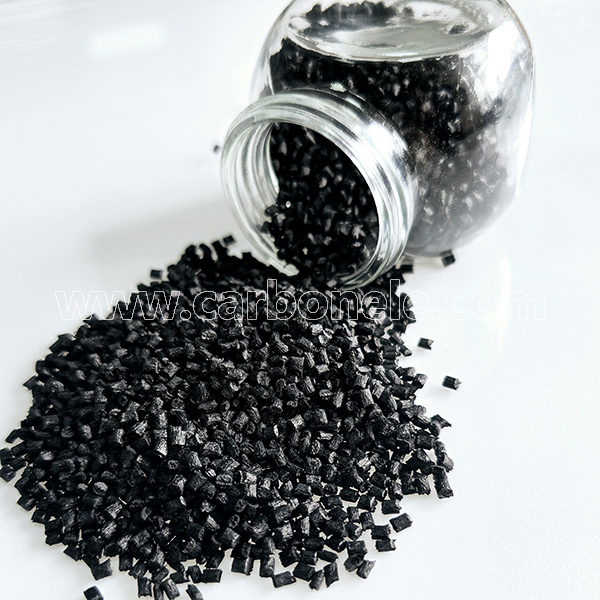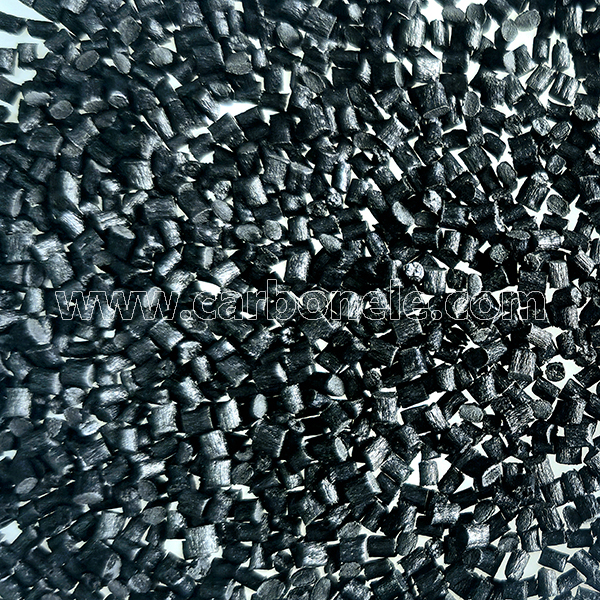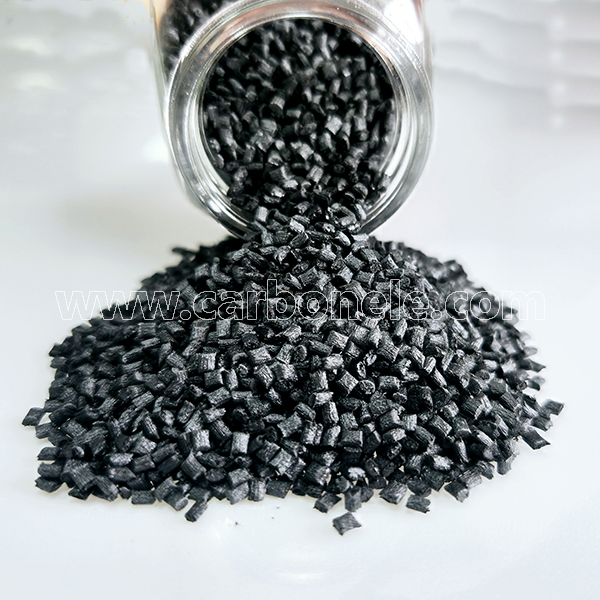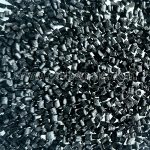
Nylon 66 PA66 Filled with 30% Carbon Fiber Compounds
The density of PA66 carbon fiber is around 1.28. The strength of carbon fiber is 20 times than that of iron, and its strength will not decrease even at high temperatures of 2000°C. It is also resistant to fatigue and corrosion.
- Manufacturer: Carbon New Material
- OEM/ODM: Acceptable
- Color: Black
- Free Samples: ≤25kgs
- MOQ: 100kgs
- Port: Xiamen
- Model Number: PA66-CF-BCA3
- Molding Process: Injection/extrusion molding
What are PA66 Filled with 30% Carbon Fiber Compounds?
Nylon 66 PA66 filled with 30% carbon fiber is an exceptional high-performance composite material that ingeniously combines the advantageous properties of Nylon 66 with the reinforcing benefits of carbon fiber. This remarkable material is meticulously designed to offer significantly enhanced mechanical, thermal, and dimensional properties, making it indispensable for a wide range of demanding applications.
Material Composition: Nylon 66, widely recognized as PA66, is a type of polyamide renowned for its outstanding and well-balanced blend of strength, toughness, and remarkable resistance to wear and abrasion. When 30% carbon fiber is skillfully incorporated into the Nylon 66 matrix, the material undergoes substantial improvements in its mechanical performance. Carbon fiber, an inherently strong and lightweight material, acts as a powerful reinforcement, enhancing the rigidity and strength of the base nylon to an extent that the resulting composite exhibits superior properties when compared to unfilled nylon.
Performance Characteristics:
1. Mechanical Strength: The strategic inclusion of 30% carbon fiber brings about a remarkable increase in the tensile strength and rigidity of Nylon 66. This enhancement makes the composite highly resilient to deformation under load and enables it to withstand extremely high mechanical stresses with ease. For instance, in the aerospace industry, components made from this material can withstand the intense forces and vibrations experienced during flight.
2. Thermal Stability: The carbon fiber reinforcement plays a crucial role in improving the thermal stability of Nylon 66. PA66 Filled with 30% Carbon Fiber Compounds maintain its structural integrity and mechanical properties even at elevated temperatures, making it highly suitable for applications that involve prolonged exposure to heat. Consider automotive engine parts, where the material can withstand the high temperatures generated within the engine compartment.
3. Dimensional Stability: Nylon 66 enhanced with carbon fiber demonstrates minimal thermal expansion and exhibits superior dimensional stability. This ensures that the material retains its precise shape and size, even when subjected to fluctuating environmental conditions. This characteristic is of utmost importance in precision engineering applications where tight tolerances are essential.
4. Wear Resistance: The addition of carbon fiber significantly enhances the wear resistance of the nylon, making it an ideal choice for applications involving continuous friction or abrasive forces. In industrial machinery, components like gears and bearings made from this composite material last longer and perform reliably under harsh operating conditions.
5. Lightweight: Despite the robust reinforcement, PA66 Filled with 30% Carbon Fiber Compounds manage to remain relatively lightweight. This is a crucial advantage in applications where weight reduction is a critical factor without sacrificing the necessary strength and performance. For example, in the automotive sector, lightweight components contribute to improved fuel efficiency and overall vehicle performance.
Some Successful Cases of PA66 Filled with 30% Carbon Fiber Compounds
In the automotive field:
– A well-known automotive brand used this material in the engine hood components of its high-performance models. This not only reduced the overall weight of the vehicle and improved fuel efficiency but also maintained excellent dimensional stability and mechanical strength in the high-temperature environment of the engine, reducing the risk of component deformation and failure.
– Transmission system components of the vehicle, such as gears and shafts, significantly enhanced their ability to withstand high torque and high-speed operation after adopting this material, prolonging the service life of the components and reducing maintenance costs.
In the aerospace field:
– An aerospace company applied it to the internal structural parts of aircraft, such as seat frames and luggage rack supports. Due to the lightweight and high-strength characteristics of the material, the aircraft can carry more cargo and passengers while reducing fuel consumption.
– Some key components of the aircraft engine also adopted this nylon composite material, which can operate stably in high-temperature, high-pressure and high-vibration environments, ensuring flight safety.
In the industrial manufacturing field:
– In robot manufacturing, the joint components of the mechanical arm used this material, improving the motion accuracy and load capacity of the robot and enabling it to complete complex tasks more efficiently.
– It was used to manufacture the conveyor chains in the factory’s automated production line, enhancing the wear resistance and strength of the chains, reducing the replacement frequency of the chains and improving the operation efficiency of the production line.
In the field of electronic equipment:
– A high-end laptop manufacturer used this material in the shell of its products, providing good structural strength and heat dissipation performance, while making the laptop thinner and more portable.
– Some mobile phone manufacturers used it for the frame structure of mobile phones, enhancing the anti-drop performance and durability of the phones.
Learn more details about PA66 Filled with 30% Carbon Fiber Compounds or other carbon fiber filled nylon compounds, please click here, or visit our YouTube to watch videos on CFRTPs.
Should you be interested in PA66 + 30% CF compounds, please contact us at any time.
Known for Extensive Use
Usage: Conductive products, communication products, engineering products that shield electromagnetic waves, radio frequency interference, and wear resistance

Carbon (Xiamen) New Material
Carbon (Xiamen) New Material is a leading force in advanced materials.<\br> It has skilled experts and advanced facilities. The company focuses on R&D to create superior materials.<\br> It offers a diverse range of products for various industries, emphasizing quality and adhering to strict standards.<\br> It's also committed to sustainability. In short, it's innovative and contributes to materials tech with quality products.

Advanced Laboratory Equipment
The laboratory of Carbon (Xiamen) New Material is dedicated to the research, development, and innovative applications of carbon fiber reinforced thermoplastic composites. Equipped with advanced experimental facilities and a professional research team, it is committed to promoting technological advancements in this cutting-edge field.

Characteristics of Carbon Fibers
Carbon fibers have several notable characteristics. They possess extremely high strength and stiffness, making them ideal for demanding applications. Their lightweight nature is a significant advantage, reducing the overall weight of products. Carbon fibers also offer excellent heat resistance and electrical conductivity. They have low thermal expansion, ensuring dimensional stability. Moreover, they are chemically inert, resistant to corrosion and degradation. These unique properties make carbon fibers indispensable in aerospace, automotive, and sports equipment industries.
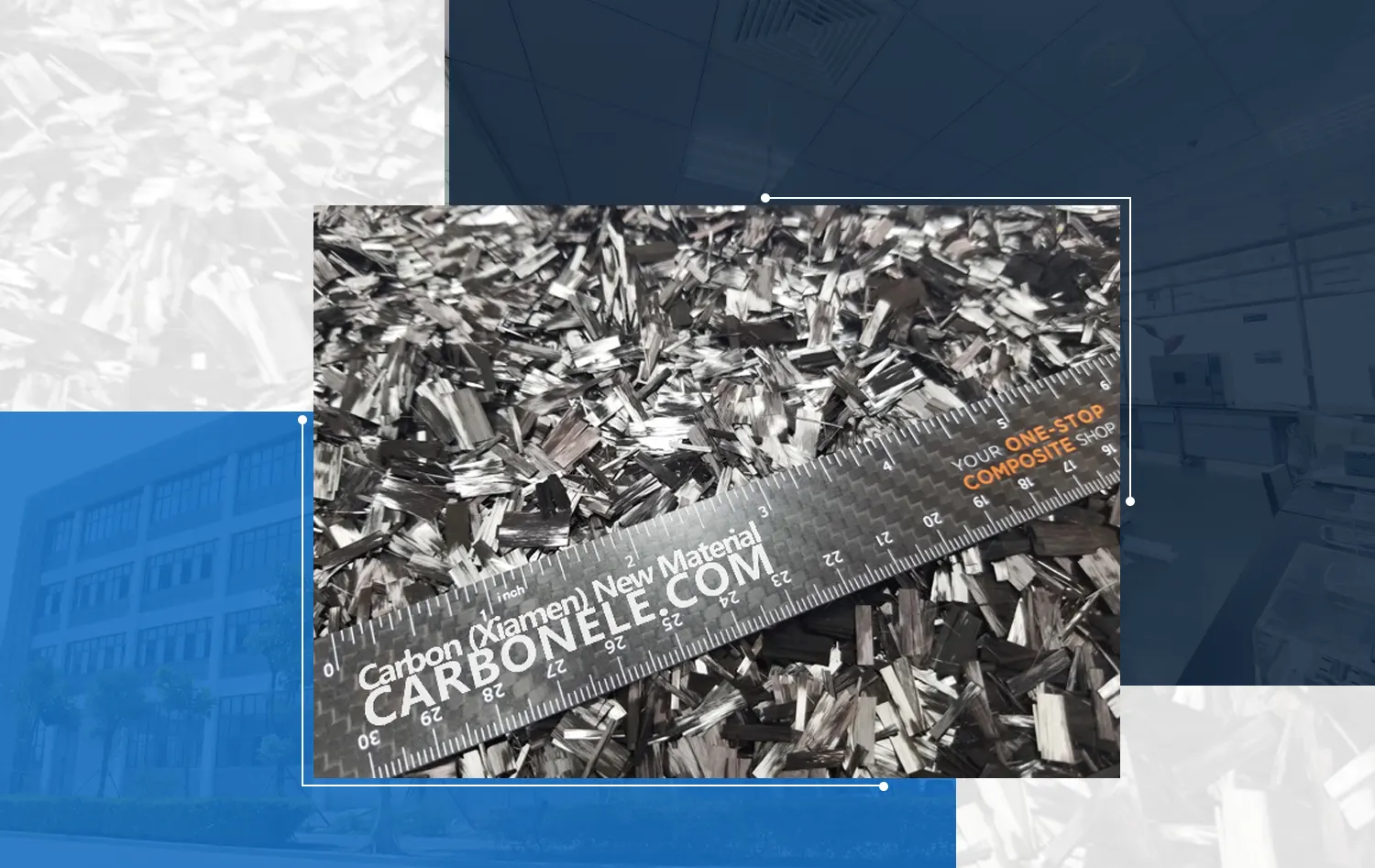
Frequently Asked Questions
Carbon (Xiamen) New Material Co., Ltd. aims to provide buyers with "one-stop" worry-free high-quality services. Here you can find all information about carbon fiber engineering plastics. If you still have questions, please send us an email for consultation!
-
How can I contact the manufacturer of a product that interests me?
When you find a product you are interested in, you can contact the manufacturer directly by sending an email and we will get back to you as soon as possible.
-
How do I find the products that interest me?
All you need to do is enter the keyword, product name in the search window and press the Enter key on your keyboard. Your search results page will then be displayed. You can also search within the product category pages on the home page. Each category is divided into subcategories, allowing you to refine your search and find products that interest you.
-
Where will I find a buying guide?
Please contact our after-sales service directly and we will provide you with a comprehensive operating guide.
-
What are CF Reinforced Thermoplastic Composites?
CF Reinforced Thermoplastic Composites are materials where carbon fibers are incorporated into a thermoplastic matrix. They combine the strength and stiffness of carbon fibers with the processability and recyclability of thermoplastics. For instance, they are used in automotive parts like bumper beams.
-
What are the benefits of CF Reinforced Thermoplastic Composites over traditional composites?
The key benefits include faster production cycles, easier recyclability, and better impact resistance. They also offer design flexibility. An example is in the manufacturing of consumer electronics casings where complex shapes can be achieved more easily.
-
How are CF Reinforced Thermoplastic Composites processed?
Common processing methods include injection molding, extrusion, and compression molding. Injection molding is widely used for mass production. For example, in the production of small components for the medical industry.
-
What industries use CF Reinforced Thermoplastic Composites?
They are utilized in aerospace, automotive, medical, and sports equipment industries. In aerospace, they can be found in interior components. In the medical field, they might be used in prosthetics.
-
How does the carbon fiber content affect the properties of the composites?
Higher carbon fiber content generally leads to increased strength and stiffness but may reduce ductility. A moderate content is often balanced for specific applications. For example, a higher content might be preferred in structural parts of a race car.
-
What are the challenges in using CF Reinforced Thermoplastic Composites?
Challenges include higher material costs, complex processing equipment requirements, and ensuring uniform fiber dispersion. Issues with adhesion between the fibers and the matrix can also arise. An example is in achieving consistent quality in large-scale production.








